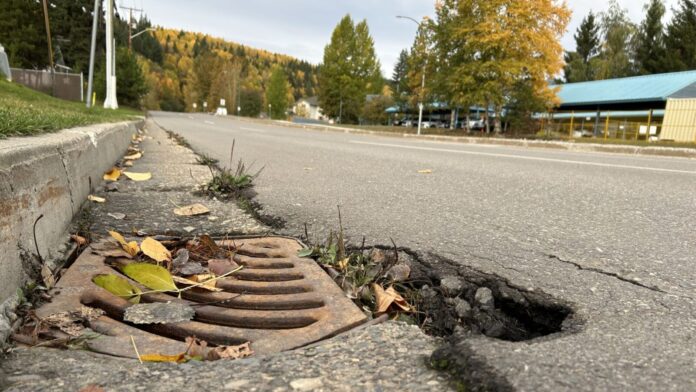Prince George City Council will be discussing options on implementing a new dedicated stormwater management fund.
Ultimately, City Council voted to create a utility fee based on the actual measurement of the hard surface area in a sampling of all types of residential properties.
According to a report being presented to Council at tomorrow’s (Monday) meeting, the first step in determining the stormwater fund fee structure was to measure the hard surfaces of properties within City limits.
AECOM Canada was hired by the City to perform this work, utilizing aerial photos and property information.
According to the report, an average residential hard surface area was calculated equaling 304 metres squared, known as one Equivalent Residential Unit (ERU) or one billing unit.
Residential dwellings would be charged based on one billing unit, the rate of which would be determined annually based on the approved annual funding level.
City staff have prepared a financial model, starting January 1st, 2027, projecting an estimated $9 million of annual expenses, which includes costs to operate and maintain the system ($2.8 million) as well as the average annual reinvestment required to replace the system’s infrastructure ($6.1 million).
At tomorrow’s meeting, City Council will be presented with five options:
- Begin charging all properties the full funding level of $9M with an annual ERU of $169.07 as of January 1, 2027.
- Option 1, plus freeze the extra 1% to the General Infrastructure Reinvestment Fund (GIRF) for two years. This option mostly neutralizes the 2.25% net increase to the representative home owner. The City still has a large infrastructure funding gap so this option doesn’t help us close it much and may result in future funding challenges for infrastructure types that are funded by GIRF (facilities for example). The two-year freeze would be proposed in 2027 and 2028.
- Begin charging all properties on January 1, 2027 at less than the full funding level with phased increases over two years to reach the full funding level. The intent of this option would be to start charging an ERU at $103.15 in the table above and then increase the ERU in 2028 and 2029 to reach the full funding level in 2029. This option helps close the
infrastructure funding gap in storm drainage just as in Option 1, but takes a little more time to get there. Challenges in this option would include the utility relying on other funding sources for capital reinvestment for a while longer until the reserve has time to build up enough funds. Also, the increases in 2028 and 2029, as a percentage, would be high and likely result in heavy criticism in those years. - Option 1, 2, or 3, plus implement a credit program as a pilot for 3 years to determine its benefits.
- Do not create a dedicated fund and continue to include stormwater related expenses within the general tax levy, where it will need to compete with other City service categories
If option 1, 2, 3, or 4 are chosen, a Stormwater Infrastructure Fund Utility Bylaw would likely come back to Council for approval before the end of the year.
Other items to be discussed tomorrow includes an update on FIFA World Cup watch parties, and expense reports from the Mayor.
The full agenda for tomorrow’s meeting can be found here.
Something going on in the Prince George area you think people should know about?
Send us a news tip by emailing [email protected].







